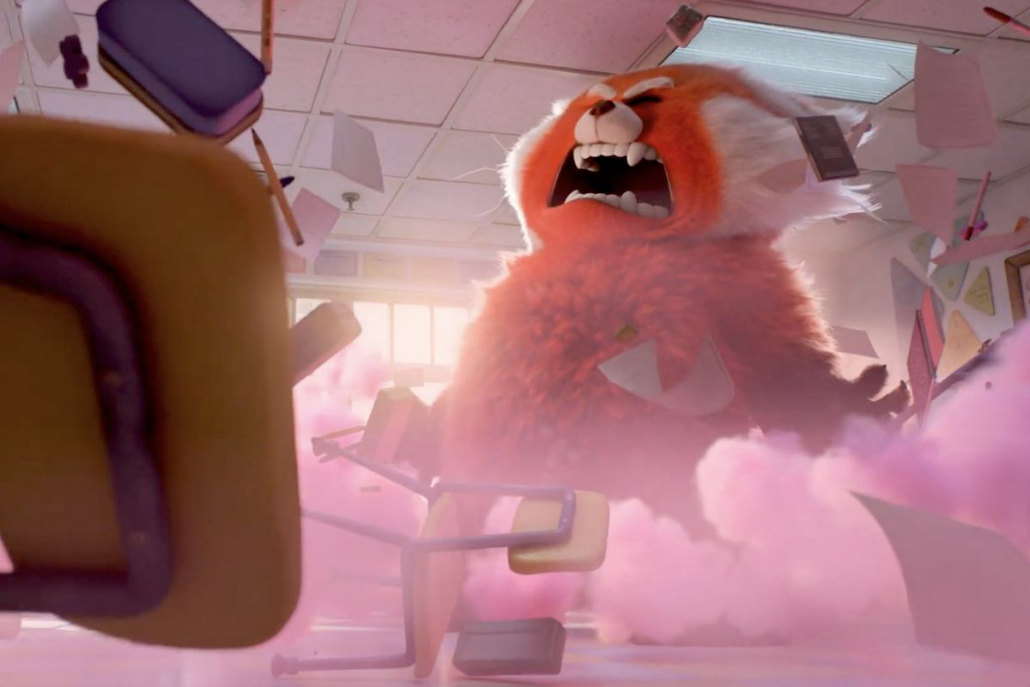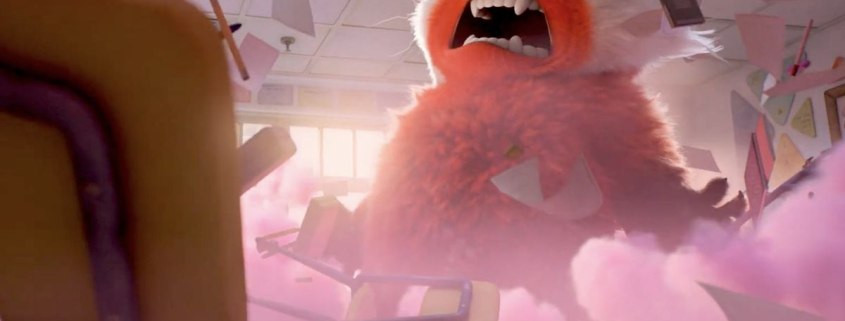Animated: Pixar films are truly transformative experiences

First of all, I’d like to wish everyone a happy April! From my point of view, this month is a time for us all to reflect on what we want from the end of the semester and where we want to find ourselves at the end of it all. For me, that reflection comes in the form of self-love, self-care and self-improvement.
This April, I’m planning on transforming into a better version of myself. My usual self is constantly sending out anxious messages to family and friends or laying in bed thinking about how I could be more productive or really just worrying about everything that’s out of my control. That worrying prevents me from doing the things I actually want to do, like getting out there and interacting with people and the world.
But I want to do better. In stronger terms, I want to transform — a concept that got me thinking about my beloved works of animation.
Transformation is at the core of many Pixar animated films. The latest hit from the studio, “Turning Red,” features a young Chinese Canadian girl who turns into a red panda whenever she’s particularly emotional. “Luca” is a film about a young boy who turns into a sea monster whenever he’s in the water. In both of these stories, transformation is something that’s initially feared but later embraced.
Unlike the previous two films mentioned, the 2012 movie “Brave” doesn’t have a protagonist who transforms. Yet, in “Brave,” it’s the protagonist’s mother who is mistakenly turned into a bear, and that’s what eventually leads to the resolution of the mother-daughter conflict. The idea that one individual can transition to another state is a crux of storytelling.
As a narrative studies major, I live and breathe storytelling. Whenever they hear about my major, most people ask me what exactly narrative studies is. Sometimes, as I await the question that I know will come, I wish that I had chosen to major in something more self-explanatory.
Then, I realize that the process of explaining what my major is, in itself, is a kind of storytelling. I’m finding out more about myself and what I want from my major as I’m telling other people about it. Suddenly, I’m able to transform my major from something incomprehensible to something fascinating.
Now, why am I talking about my major? It might just be the narrative studies in me speaking, but I see transformation as an incredibly powerful and symbolic cinematic device. In “Turning Red,” although the protagonist Meilin Lee is frightened by her red panda form, her red panda form actually becomes her source of teen rebellion and freedom. In “Luca,” although the main character Luca is initially intent on keeping his sea monster form a secret, he finds that being a sea monster doesn’t mean he has to be an outsider.
In “Brave,” Princess Merida is forced to confront the fact that she’s turned her mother Queen Elinor into a bear after she makes a deal with a witch that Elinor will “change.” While a resentful and embittered Merida originally wanted her mother to “change” in becoming more acquiescent to Merida’s wishes, Elinor turns into a bear instead and begins to lose her humanity. “Brave” teaches us to question not only the costs and consequences of our wishes, but the boundaries between artificial and authentic change. The film does a great depiction of this throughout the story, by far the most emotional moment is when Merida thinks her mother’s humanity is lost and that she has become a bear. As the sun rises, Elinor becomes human again.
“You changed,” says a shocked Merida. “Oh, darling,” her mother responds affectionately. “We both have.”
Even as we might hope that things will stay the same, change often marks the growth of a character and the fulfillment of a purpose. After all, all of these stories are about character journeys, which necessitate some kind of a transformation.
The “transformation” doesn’t even have to be an explicit means of becoming a whole other species. In “Ratatouille,” a film that I can easily and will most definitely talk about for hours, Remy is a rat who learns that being a rat doesn’t mean that he can’t also be a chef. The movie is about Remy overcoming that external stigma and the self-doubt of his ability to truly become who he aspires to be.
Pixar’s animated films invite you to imagine your own narrative arcs, even if there aren’t carefully structured climaxes and resolutions. There’s something I love about that, and it’s why I chose to be a narrative studies major in the first place.
Being invested in stories means visualizing transformations and being able to chart how they occur and what meaning they have to the plot. Studying stories about transformation gave me the tools to be part of my own.
Valerie Wu is a junior writing about animation and digital arts from a contemporary perspective. Her column “Animated” runs every other Friday.

